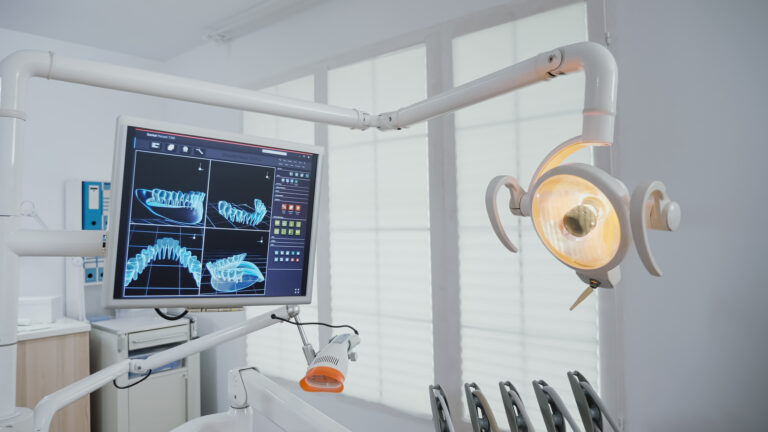Why 2025 Demands Smart Digital Tools for Medical Equipment Suppliers
Table of Contents
Introduction:
In 2025, the competition among medical equipment suppliers is fierce, and the demand from clinics, hospitals, and diagnostic labs is evolving fast.
Customers expect timely delivery, transparent pricing, and real-time communication.
As a result, suppliers must move beyond traditional methods and embrace digital tools that streamline every part of their operation.
From inventory and billing to customer support and marketplace listings, using the right digital platforms can mean the difference between growth and stagnation.
Whether you’re selling medical supplies like surgical tools or big-ticket items like oxygen concentrators and dental chairs, digitizing your processes is no longer optional; it’s essential.
This article explores the top digital tools that help medical equipment suppliers improve efficiency, reduce delays, and attract more buyers through B2B marketplaces.
By adopting smart tech, suppliers can boost productivity, optimize inventory, and expand their reach in a healthcare market that’s becoming increasingly online-first.
Let’s dive in.
1. What Are the Best CRM and Inventory Management Tools for Medical Equipment Suppliers in 2025?
For medical equipment suppliers, managing customer relationships and inventory accurately is key to operational success.
In 2025, with rising B2B demand and increased buyer expectations, leveraging reliable digital tools becomes a necessity, not a choice.
Let’s explore the top CRM and inventory management tools best suited for the medical supply industry:
Zoho Inventory + Zoho CRM
- Why it’s useful: Zoho offers an integrated platform that allows suppliers to track leads, manage client communication, and sync inventory across multiple channels.
- Key Features:
- Real-time inventory updates
- Automated billing and invoicing
- Lead and deal tracking for repeat buyers
- Best For: Small to mid-sized medical equipment suppliers selling via both online and offline channels.
Marg ERP 9+
- Why it’s industry-specific: Marg ERP is widely used in India by medical supplies distributors due to its specialization in pharmaceutical inventory and billing.
- Key Features:
- Batch-wise stock tracking and expiry alerts
- GST-compliant e-invoicing
- Retailer-distributor CRM integration
- Best For: Wholesale suppliers managing a wide range of medical tools and consumables.
Medikabazaar Seller Dashboard
- Why it matters: Medikabazaar offers a powerful B2B platform tailored for medical equipment suppliers. Their seller dashboard acts as both a CRM and an inventory portal.
- Key Features:
- Manage catalog listings and product visibility
- Track incoming orders and payment status
- Run promotional campaigns for bulk buyers
- Best For: Suppliers actively selling via B2B marketplaces and targeting hospitals, labs, and large buyers.
TallyPrime with Inventory Add-ons
- Why it helps: Tally remains a trusted name in SME accounting. With added inventory modules, it becomes a robust solution for medical tools businesses needing financial and stock control.
- Key Features:
- Inventory costing and valuation
- Integrated purchase/sales modules
- Barcode-enabled stock tracking
- Best For: Suppliers already using Tally for accounting and looking for seamless inventory integration.
Comparison Table:
Tool | CRM Functionality | Inventory Management | Best For | Price Range |
Zoho Inventory + CRM | ✅ Full Suite | ✅ Real-time tracking | Omnichannel suppliers | ₹1,500–₹5,000/mo |
Marg ERP 9+ | ✅ Integrated | ✅ Pharma-specific | Distributors of pharma/med-surg | ₹10,000–₹25,000/yr |
Medikabazaar Seller Panel | ✅ Basic CRM | ✅ Marketplace focused | B2B e-commerce suppliers | Free (with sales) |
TallyPrime + Add-ons | ⚠️ Limited CRM | ✅ Customizable | Finance-led stock tracking | ₹18,000–₹30,000 |
By choosing the right CRM and inventory system, medical equipment suppliers can manage order flows, maintain stock accuracy, and improve customer satisfaction.
These tools are foundational for scaling in competitive B2B marketplaces.
2. How Can Digital Quotation and Invoicing Tools Streamline Daily Operations for Equipment Vendors?
For medical equipment suppliers, speed and accuracy in business operations can make or break a deal.
Manual quotation and invoicing not only consume time but often lead to errors and payment delays.
This is where digital tools step in to transform how vendors operate day-to-day.
Why Quotations Matter in B2B Equipment Sales
Quotations are the first formal step in closing a deal. In fast-paced B2B marketplaces, vendors often lose leads due to delayed or unprofessional quotations.
A digital quotation tool helps you:
- Generate branded, accurate quotes in minutes
- Add GST and delivery charges with automated tax rules
- Track quote status (viewed, accepted, pending)
- Convert quotes into invoices with a single click
Medical equipment vendors who send quotations digitally appear more reliable and responsive to clinics, hospitals, and procurement managers.
Faster, Error-Free Invoicing
Traditional manual invoicing creates multiple issues:
- Calculation errors
- Tax mismatches
- Lost or duplicate invoices
- Difficulty in tracking overdue payments
Digital e-invoicing platforms like Zoho Invoice, TallyPrime, or Vyapar solve these problems by automating calculations, standardizing formats, and syncing invoices with your CRM or inventory tools.
Streamlined Buyer Communication
Using these tools improves communication with buyers by:
- Sending automated reminders and follow-ups
- Sharing payment links directly within invoices
- Offering real-time status updates (paid, unpaid, overdue)
- Ensuring GST compliance to avoid buyer-side rejections
In India, tools like Marg ERP and Medikabazaar Seller Panel even offer custom invoice templates specific to medical supplies, reducing confusion for repeat customers.
Key Benefits of Digital Quotation & Invoicing Tools for Medical Equipment Vendors:
Feature | Benefit |
Automated tax and discount logic | Accurate quotes, fewer disputes |
One-click quote-to-invoice | Faster order processing |
Branded professional formats | Builds vendor credibility |
Reminders and follow-ups | Improves collection speed |
Integration with stock systems | Avoids overselling out-of-stock items |
In summary, switching to digital quotation and invoicing tools not only saves time but also boosts credibility and cash flow.
For medical equipment suppliers, this automation is no longer optional’s essential for scaling up in today’s digital-first B2B marketplace.
3. What Are the Best Logistics and Delivery Coordination Tools for Medical Equipment Suppliers?
In the medical supply business, on-time delivery is critical.
Whether it’s a diagnostic machine or a set of surgical tools, delays can directly impact healthcare delivery at the buyer’s end.
This makes logistics and delivery coordination tools essential for medical equipment suppliers aiming to operate efficiently in 2025.
Why Logistics Coordination Matters
Many B2B marketplaces now expect vendors to provide clear delivery timelines, shipment tracking, and quick issue resolution.
Without digital tools, coordinating dispatch, courier partners, and delivery proofs becomes chaotic, especially when managing multiple orders across regions.
Using digital platforms streamlines this process by:
- Automating dispatch workflows
- Assigning orders to shipping partners
- Generating delivery challans and shipping labels
- Providing real-time order tracking to clients
Top Logistics & Delivery Tools for Medical Suppliers

Here are some of the most effective tools to consider:
Tool / Platform | Key Features | Suitable For |
Shiprocket | Integration with marketplaces, real-time tracking, and COD support | Small to mid-sized vendors |
Delhivery Partner | Bulk shipment, medical-grade logistics, and warehouse services | Pan-India distribution |
Pickrr | AI-based courier selection, return automation | Sellers managing high order volumes |
Tookan by Jungleworks | Route optimization, agent tracking, and real-time POD updates | Own delivery fleet or service areas |
Medikabazaar Seller Panel | In-built logistics coordination with medical-specific SLAs | Existing Medikabazaar sellers |
Integration with Inventory and Billing Systems
Most modern logistics tools integrate seamlessly with your existing CRM, inventory management, or e-invoicing software. For instance:
- When a buyer confirms a quotation, the dispatch order is automatically generated
- Delivery updates sync with accounting to trigger payment cycles
- Proof of Delivery (POD) can be linked to invoice completion
Benefits of Digital Delivery Coordination for Medical Equipment Vendors
- Faster TAT: Reduce delays with automated dispatch
- Buyer Trust: Offer transparent tracking and delivery confirmation
- Operational Efficiency: Less manual follow-up with couriers
- Reduced Errors: Clear labeling and system-driven logistics prevent mismatched deliveries
4. Which Platforms Help Manage Sales, After-Sales Service, and Warranty Tracking for Medical Equipment?
For medical equipment suppliers, the sale doesn’t end with delivery.
After-sales service is just as important, especially for high-value items like diagnostic machines, dental chairs, oxygen concentrators, or surgical tools.
Managing warranty claims, Annual Maintenance Contracts (AMC), and service tickets is crucial for building long-term trust in the medical supplies business.
Let’s explore the best digital tools and platforms that streamline after-sales service and ensure excellent post-purchase support on B2B marketplaces and beyond.
Why After-Sales Tools Matter for Medical Equipment Suppliers
In the B2B medical space, clinics, labs, and hospitals rely on vendors not just for equipment but for continued functionality.
Without proper tracking:
- Warranties may expire without notice
- AMCs can lapse, leading to equipment downtime
- Service requests may be lost or delayed, affecting customer satisfaction
This is where digital platforms come in.
Top Platforms for After-Sales Service Management
Tool / Platform | Key Features | Suitable For |
Zoho CRM + Zoho Desk | Unified sales + service ticketing, warranty module, email/SMS alerts | Small to mid-size suppliers |
Freshdesk + Freshsales | Service automation, AMC reminders, WhatsApp support | Vendors wanting seamless communication |
Salesforce Service Cloud | Full-service suite for large suppliers, AMC + SLA tracking, technician apps | Large-scale B2B suppliers |
Marg ERP 9+ Service Add-on | Inventory + invoicing + AMC management tailored for medical suppliers | Traditional pharma & medical vendors |
Tookan + FieldAssist | Field engineer tracking, geo-tagging, service ticket resolution | On-site servicing vendors |
Key Functionalities to Look For
- AMC & Warranty Database
Keep a digital log of each equipment’s warranty and AMC expiry dates with auto-reminders for clients and internal teams.
- Service Ticket System
Allow clinics or hospitals to raise support tickets via mobile, email, or chat and track status in real time.
- Spare Parts & Technician Mapping
Ensure the right spares and technicians are dispatched with minimal delays.
- Customer Feedback Integration
Collect feedback after every service interaction to improve support quality.
- Mobile App Access
Enable field engineers to check assigned jobs, mark attendance, and close tickets remotely.
Benefits of Using These Tools
- Improved Buyer Retention: Support builds trust in recurring B2B relationships
- Operational Efficiency: Track and close service issues without delays
- Revenue Opportunities: Upsell AMC or spare parts during support calls
- Better Brand Perception: Well-supported products reflect professionalism
5. How Do B2B E-Commerce Platforms Help in Lead Generation and Product Listing Optimization?
For medical equipment suppliers, visibility equals opportunity.
In 2025, B2B marketplaces like IndiaMART, TradeIndia, and Medikabazaar are more than just directories; they are powerful engines for lead generation and product discovery.
When optimized well, these platforms can drive steady inquiries, sales, and long-term partnerships in the medical supplies sector.
How B2B Platforms Generate Leads
B2B e-commerce portals connect verified buyers and sellers through targeted search and algorithmic matching. Here’s how they work:
- Buyer Search Behavior: Clinics and hospitals search for specific products like “ICU bed supplier in Pune” or “digital BP monitor price.”
- Listing Algorithms: The platform ranks suppliers based on keyword relevance, profile completeness, product images, and response rate.
- Inquiry System: Buyers can directly send RFQs (Request for Quotes) to selected sellers, generating qualified leads instantly.
This system creates a digital sales funnel for medical equipment suppliers, reducing dependency on field sales or cold calls.
How to Optimize Listings for More Leads
Effective product listing optimization ensures that your medical tools and equipment appear at the top of relevant searches. Here’s how to do it:
- Use SEO-Optimized Product Titles
- Bad: “Suction machine”
- Good: “Hospital Grade Suction Machine with 1-Litre Bottle – CE Certified”
- Add High-Quality Images
- Use multiple angles, clean white backgrounds, and close-ups of control panels, wheels, or power ports.
- Show real-life use cases, such as the equipment setup in a clinic.
- Write Complete Product Descriptions
Include:
- Technical specs
- Usage instructions
- Certifications (ISO, CDSCO, CE)
- Warranty and delivery details
- Leverage Buyer Ratings and Testimonials
Platforms with review systems (like IndiaMART and Medikabazaar) display seller ratings. Prompt satisfied buyers to leave feedback after purchase to increase trust and conversions.
- Maintain Fast Response Times
Suppliers who respond quickly to queries often get better visibility and trust badges, improving lead conversion.
Example: How Optimization Affects Visibility
Listing Quality | Ranking in Search | Lead Volume |
Basic Listing (title only) | Page 3 or lower | 0–3/month |
Optimized Listing (images + keywords + reviews) | Page 1 | 15–25/month |
6. What Analytics Tools Can Medical Suppliers Use to Forecast Demand and Manage Procurement Better?
For medical equipment suppliers, accurate forecasting is not optional; it’s essential.
Demand in the healthcare sector can shift rapidly due to disease outbreaks, seasonal trends, or regulatory changes.
Without proper forecasting tools, suppliers risk overstocking slow-moving inventory or understocking high-demand medical supplies.
Both scenarios hurt cash flow and customer satisfaction.
That’s where analytics tools come in.
Why Demand Forecasting Matters
Effective forecasting helps medical suppliers:
- Reduce dead stock and wastage.
- Plan procurement and manufacturing cycles.
- Optimize warehouse space and delivery schedules.
- Align purchase orders with actual clinic or hospital needs.
Let’s explore the digital tools that help streamline this process.
Best Tools for Forecasting Demand in 2025
- Google Data Studio (Now Looker Studio)
- Free and powerful.
- Integrates with Google Sheets, CRMs, or sales trackers.
- Helps visualize sales trends and buyer behavior.
- Ideal for small vendors who need easy dashboards.
- ERP Dashboards (e.g., Zoho Inventory, Marg ERP)
- Offer built-in sales and inventory analytics.
- Track fast-moving SKUs and seasonal demand.
- Send low-stock alerts.
- Integrate purchase orders, invoices, and dispatches under one system.
- Custom Excel-Based Trackers
- For MSMEs not ready for full ERP systems.
- Build monthly sales vs. stock templates.
- Use formulas for moving averages, reorder points, and lead time forecasting.
- Color-coded alerts help identify which medical tools need replenishing.
Sample Columns for Excel Tracker:
Item Name | Monthly Avg Sales | Current Stock | Lead Time (Days) | Reorder Level |
Pulse Oximeter | 200 | 90 | 7 | 150 |
ECG Machine | 10 | 5 | 15 | 7 |
Tips to Maximize Results
- Review weekly: Don’t rely on quarterly reviews—medical demand changes fast.
- Segment products: Use ABC analysis to focus more on high-demand items.
- Connect CRM data: Link customer inquiries to stock data to detect hidden demand.
Conclusion: Smarter Tools, Stronger Growth for Medical Equipment Suppliers
In 2025, medical equipment suppliers must move beyond manual operations and embrace digital efficiency.
From inventory tracking to invoicing, CRM to forecasting, the tools available today are not just convenient, they are essential.
Leveraging platforms like Zoho, Marg ERP, Google Data Studio, and B2B marketplaces like IndiaMART or Medikabazaar helps you streamline processes, reduce delays, and boost profitability.
Whether you’re a supplier of basic medical supplies or high-value medical tools, digital platforms help optimize sales, improve lead conversion, and forecast demand with precision. By investing in these digital tools, you not only cut costs but also future-proof your business.
Small changes like automating invoices or digitizing your product catalog can unlock big gains.
The time to act is now.
Waiting could mean losing ground to more tech-savvy competitors.
Following Video Might be Helpful for You
Also Read,
- The Ultimate Guide: Working Capital Loans for Small Business (MSMEs) in 2025
Understanding the Impact of Payment Terms on Working Capital for Clinics
How Poor Inventory Management Hurts Working Capital in Pharmacies.
Want a Better Business Credit Score? Small Pharmacies Can Now Use UPI & Cards to Build It
Want a Better Credit Score? Use Small Daily Payments to Build Your CBIL (For Clinics & Pharmacies)
Case Study:How a Small Clinic Improved Its Working Capital Management





